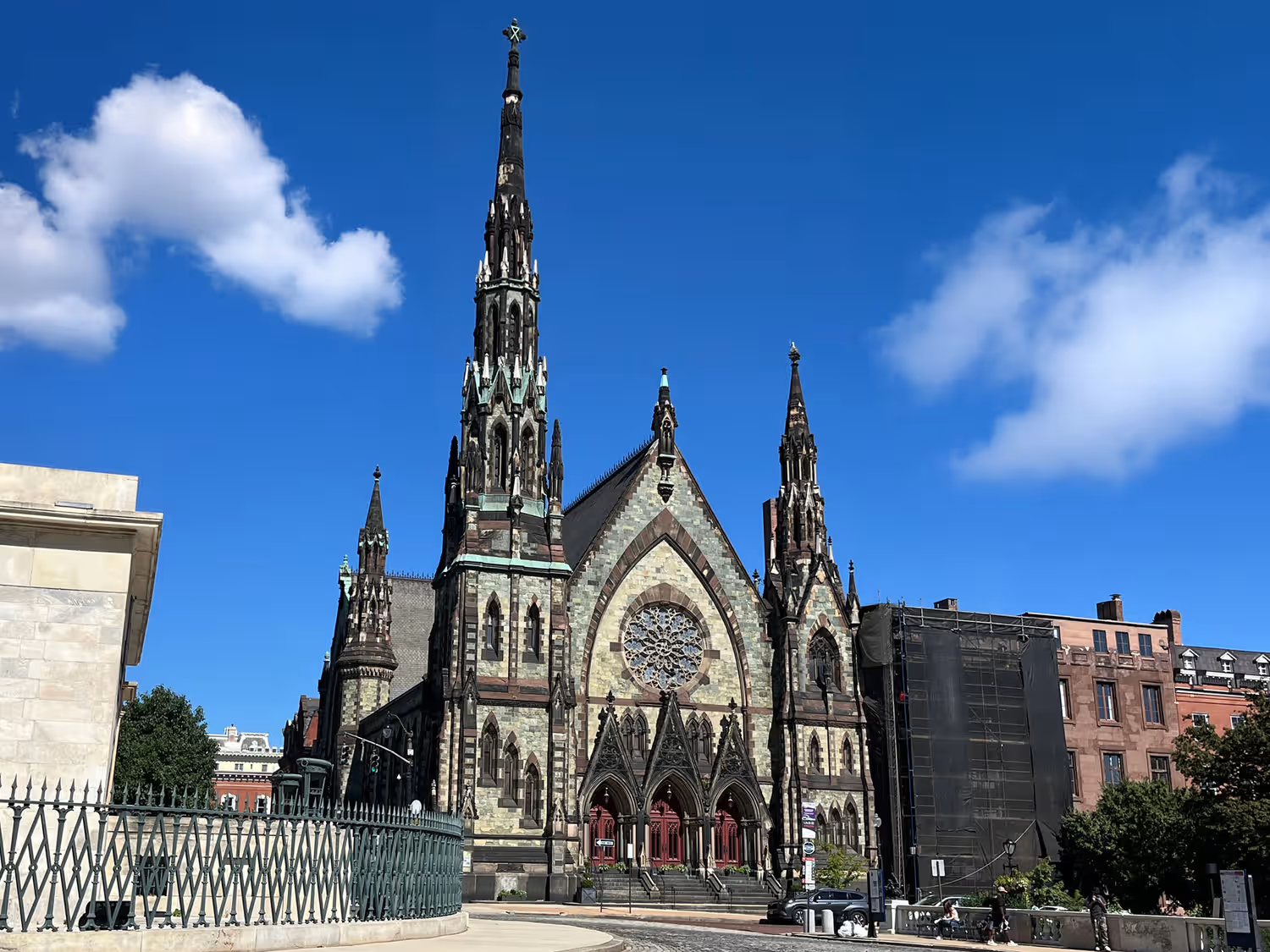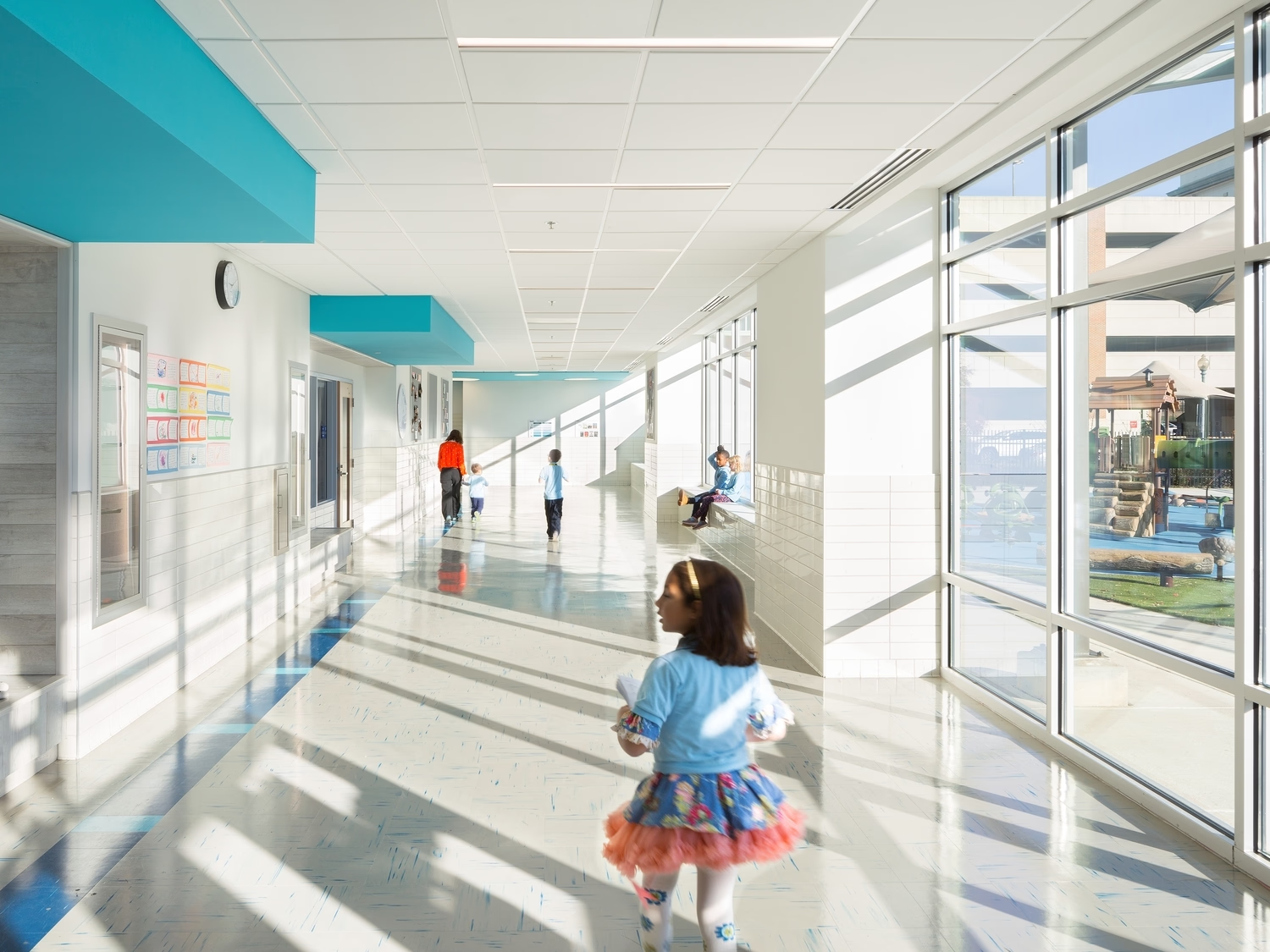
The building industry is one of the largest producers of the carbon emissions that are rapidly warming our planet and causing climate change. We need to cut carbon emissions – and fast. Enter building reuse: the renewal of existing buildings to help them support contemporary needs. Every time we extend a building’s lifespan rather than knocking it down and replacing it, we avoid emitting thousands of tons of carbon into the atmosphere.
Quinn Evans has long practiced on the cutting edge of building reuse. Our portfolio is full of examples encompassing the entire spectrum of building renovation: from restoration, where a building’s character-giving features and spaces are returned to their original appearance, to adaptive reuse, where a building is transformed to accommodate an entirely new purpose.
With the growing shift toward renovation over new construction, Quinn Evans shows how to renew existing buildings as high-performance facilities for the future. Only by getting the most out of every resource, including buildings, will we be able to create the sustainable and resilient world. As the 1970s adage “Reduce, Reuse, Recycle” attests, we must first reuse what we have before building new.

A Climate Crisis
Our planet has already warmed to almost 1.5° Celsius above pre-industrial temperatures, and we are feeling the effects of this warming in the form of more powerful storms and increased drought. Current estimates place the world at 2.5° C of warming by 2100, which would have catastrophic effects on the global climate.
Climate action is needed now – we must drastically reduce the amount of carbon emissions entering the atmosphere in the next decade to limit additional global warming. Quinn Evans has long been a voice for sustainability in our industry, and we continue to advocate in global forums such as the United Nations Climate Change Conferences of the Parties. With innovation and creativity, Quinn Evans is helping to reduce emissions from the building industry by reusing existing buildings.
Raising ambition and urgent implementation is indispensable for addressing the climate crisis. This includes cutting and removing emissions faster and at wider scope of economic sectors, to protect us from more severe adverse climate impacts and devastating loss and damage.
- Sameh Shoukry, United Nations COP27 President-Designate
.jpg)
Reducing Carbon Impacts
Greenhouse gas emissions associated with buildings are described in two categories: operational carbon and embodied carbon. Reductions in both operational and embodied carbon are vital strategies for combating climate change.
Operational carbon signifies the greenhouse gases that are emitted while the building operates – for example, the emissions from coal that is burned to create the electricity that powers a building, or natural gas that is burned in a boiler on-site. We can lower a building’s operational carbon by reducing its demand for energy or by obtaining energy from renewable sources. Strategies to reduce energy demand include improving the exterior envelope, so that less warm or cool air escapes and there is less thermal transfer or solar heat gain; installing efficient mechanical, electrical, and lighting systems that use less energy; and installing meters and controls to better measure and fine-tune energy consumption.
.jpg)
Embodied carbon is less widely understood but no less important than operational carbon. A building’s embodied carbon encompasses the greenhouse gases emitted during the manufacturing of the materials that comprise it, the transportation of those materials to its site, and its construction. It also includes the greenhouse gas emissions associated with making any material repairs to the building over time, and eventually demolishing it, transporting the waste, and recycling it. Thus, embodied carbon refers to the all the carbon emissions it took to create a building – which are literally “embodied,” or given tangible form, in that building.

When a building is torn down, its embodied carbon becomes a squandered resource. When a building is reused, waste and additional embodied carbon are avoided. Because every ton of embodied carbon saved is a ton of carbon emissions avoided, we need to reuse as many buildings as we can, in any way we can. Luckily, the world is full of existing buildings that are ripe for reuse.
A Building Saved…
Quinn Evans is a national leader in building reuse, recognizing the value of existing buildings as both repositories of embodied carbon and vibrant community assets. Extending the lifespans of existing buildings allows us to create more places for people while avoiding the emissions associated with new building materials. Concrete alone is a huge source of emissions, accounting for 8% of global carbon emissions. Steel and glass are also culprits. When we reuse a building’s underlying structure, we typically avoid more than half of the embodied carbon impact of building new. As my colleague Carl Elefante has boldly been saying for decades, “the greenest building is one that’s already built.”
From restoration to renovation to adaptive reuse, Quinn Evans finds creative ways to adapt existing buildings to support contemporary needs and increase energy efficiency. Because buildings often go decades between major renovations, we take a lifecycle view, seeking to make improvements that will keep the building in service for years to come. We call our practice of revitalizing existing places while upgrading them for the future sustainable stewardship.
.jpg)
…is a Memory Preserved
An added benefit of building reuse is the preservation of community memory. People have strong emotional ties to the built environment; anyone who has revisited their childhood home after moving away knows that buildings are where memories are made. By extension, neighborhood landmarks hold the memories of entire communities.
Thanks to the research of social psychiatrist Dr. Mindy Fullilove and others, we know that the razing of beloved structures has negative impacts on community health – both physical and mental. Many historically Black communities are still scarred by the systematic erasure of once-vibrant places. Examples include the destruction of the Greenwood district in Tulsa, Oklahoma, that was known as “Black Wall Street” before it was burned by a violent mob in 1921; and the countless site of memory lost to urban renewal, the mid-20th-century federal policy that razed predominantly Black neighborhoods to create highways and office buildings.
By adapting community landmarks to serve today’s needs, we maintain and amplify the connections between people and place. And, because the buildings most in need of reinvestment tend to be found in the communities most in need of revitalization, the preservation of these buildings helps rebuild disinvested communities.
Learn more about the role of historic preservation in community health and climate action by watching Quinn Evans’ webcasts “Queries & Theories: Creating Equitable Communities” with Dr. Fullilove and “Queries & Theories: Cultural Heritage and Climate Action” with Andrew Potts of the Climate Heritage Network.
Historic preservation can be a tool for inclusion and for bringing people together. And that’s what’s needed for climate action, too.
- Andrew Potts, Climate Heritage Network
.jpg)
Leading the Way
In addition to leading the field in building reuse, Quinn Evans is a leader in the tracking and reporting of embodied carbon in our projects. We were early signatories of the AIA 2030 Commitment – a set of standards and goals launched by the AIA in 2010 with the aim of reducing emissions from buildings to net zero by 2030 – and we have reported on our progress through the Design Data Exchange (DDx) every year since. We are one of the few firms nationwide to estimate the embodied carbon for all our projects, including the carbon avoided by building reuse, and report it on the DDx.
We’re spreading the word about the importance of embodied carbon not only through our own work, but by investing in organizations and technologies that help others in the building industry quantify and reduce the embodied carbon in their projects. For example, Quinn Evans principal emeritus Carl Elefante co-founded the Zero Net Carbon Collaboration for Existing and Historic Buildings, which associate Nakita Reed now co-chairs. We also sponsored the creation of a new platform called the Carbon Avoided: Retrofit Estimator (CARE) Tool, which helps people compare the carbon impacts of reusing a building versus knocking it down and building new.
Long before embodied carbon was cool, Quinn Evans was specializing in historic preservation and redesign of existing buildings.
- 2030 By the Numbers: The 2020 Summary of the AIA 2030 Commitment
.jpg)
Thinking Differently
To meet our climate goals, the building industry must begin thinking differently. Namely, we must consider building reuse as our first and best option for the creation of new spaces. This imperative is especially important as our technologies for reducing operational carbon improve and our energy sources become greener. Quinn Evans shows the path forward.







